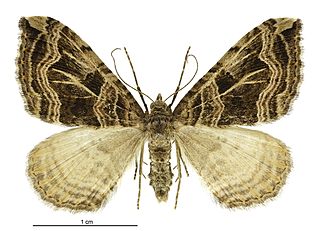
Xanthorhoe semifissata, commonly known as the barred pink looper. is a moth of the family Geometridae. It is endemic to New Zealand and is found throughout the country although it is much less common in the mountains in the south and west of the South Island. The larvae host plants include Nasturtium officinale as well as species in the Cardamine genus. Adult moths inhabit shrubs at the edge of native forest.

Helastia mutabilis is a species of moth of the family Geometridae. It is endemic to New Zealand, where it is known from both the North and South Islands. It inhabits native forest at lower altitudes and its larval host are moss species in the genus Racomitrium. This species is nocturnal and is attracted to light. It can easily be confused with the similar in appearance species Helastia alba and Helastia cinerearia.

Helastia cinerearia is a moth of the family Geometridae. It is endemic to New Zealand and can be found in the North, South and Stewart Islands as well as on the Mercury and Chatham Islands. The preferred habitat of H. cinerearia includes urban gardens, various types of forest and sub alpine habitats. The larval host is lichen on rocks. The adult moths are on the wing all year round but are most commonly observed from September until February. Adult moths are nocturnal and have been observed feeding from and likely pollinating Hebe salicifolia, Hoheria lyallii and Leptospermum scoparium.

Helastia angusta is a moth of the family Geometridae. This species is endemic to New Zealand and has been observed in the Mackenzie and Otago Lakes districts of the South Island. The preferred habitat of this species is montane areas. Adults have been observed on the wing from October until December. As at 2000, the larval host species is unknown. It is classified as "At Risk, Relict'" by the Department of Conservation.

Helastia clandestina is a moth of the family Geometridae. This species is endemic to New Zealand and is found only in the South Island in and around Arthur's Pass. Adults have been collected on the wing in February and are nocturnal. Its preferred habitat is dry stony riverbeds and flood plains. The glossy blueish grey colouration of the adults of this species helps camouflage them against the rocks in their preferred habitat. H. clandestina is classified as having the conservation status of "At Risk, Relict'" by the Department of Conservation.
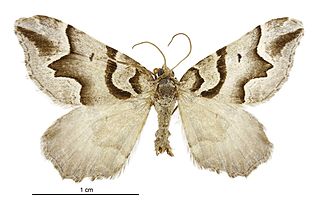
Helastia expolita is a moth of the family Geometridae. This species is endemic to New Zealand and occurs in the Buller, Marlborough, North and Mid Canterbury regions.This species inhabits short tussock grassland in montane to subalpine zones. Adult moths are nocturnal but little is known about the life history of H. expolita. Adults have been observed on the wing in November. It has been hypothesised the larvae of H. expolita feed on the flowers of Helichrysum species and then feed on mosses, lichens or shrubs growing nearby. It is classified as "At Risk, Relict'" by the Department of Conservation.
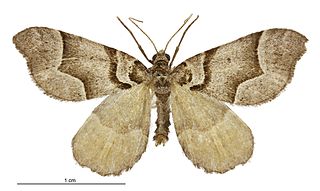
Helastia siris is a moth of the family Geometridae. This species is endemic to New Zealand and is found in the Wellington region as well as on Stephens and the Chatham Islands. It is classified as "At Risk, Relict'" by the Department of Conservation. H. siris inhabits coastal tussock grassland. Little is known of the biology of this species. Adults have been observed on the wing in March and September. Adults are nocturnal and are attracted to light.

Asaphodes prasinias is a moth in the family Geometridae. It is endemic to New Zealand and has been found on both the North and South Islands. This species inhabits native forest including beech forest and subalpine scrub. The range of this species has reduced as this species is regarded as being locally extinct in the previously inhabited open non-forest habitats around Invercargill. Adults are on the wing from November to January.

Asaphodes sericodes is a moth in the family Geometridae. It is endemic to New Zealand and has been observed in the southern parts of the South Island. This species inhabits open tussock grasslands in subalpine scrub or wetlands. The female of the species is likely semi-apterous and is flightless. The adult males are on the wing in January.
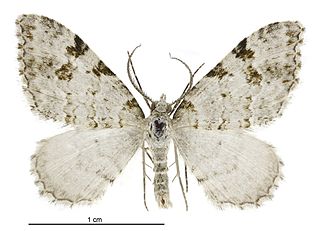
Helastia alba is a moth of the family Geometridae. This species is endemic to New Zealand and is found only in the South Island. This species inhabits native forest or scrubland and can be observed in montane to subalpine Nothofagus dominant forests. It has also been observed at lower altitudes in native podocarp forests. Larvae of this species have been raised on mosses. Adults are on the wing from November to January and are nocturnal. This species is very similar in appearance to other species in the genus Helastia, but specimens can be distinguished by the dissection of their genitalia.
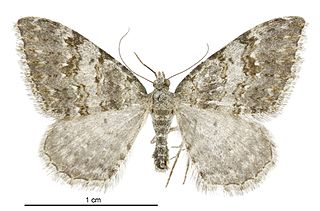
Helastia christinae is a moth of the family Geometridae. It was first described by Robin C. Craw in 1987. This species is endemic to New Zealand and has been confirmed as being observed at Dunedin, and the Central Otago and Otago Lakes areas. H. christinae inhabits subalpine to lowland areas frequenting river banks and stream sides. The food source for the larvae of this species are lichens. The adults of this species are on the wing in October to December. They are nocturnal and are attracted to light. Adult moths can be distinguished from similar appearing species in the genus Helastia as they have a "conspicuous transverse grey-ish white median band on the upper side of the forewing".
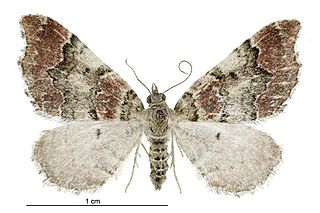
Helastia cryptica is a moth of the family Geometridae. It was first described by Robin C. Craw in 1987. This species is endemic to New Zealand and is found from mid Canterbury south. This preferred habitat of H. cryptica is native forest and scrub at altitudes ranging from lowland to subalpine. It has also been observed in human modified habitat. The larvae of this species has been observed on Melicytus alpinus, likely feeding on perched dead leaves and have been hypothesised as feeding on epiphytic mosses. Adults are nocturnal and are on the wing from November until January. Externally this species is indistinguishable from its close relative H. cymozeucta. However the distribution of these two species can assist in the correct identification of specimens.

Helastia ohauensis is a moth of the family Geometridae. This species is endemic to New Zealand and can be found in the Mackenzie District in the South Island. Adults are on the wing in December and the species inhabits subalpine terrain.
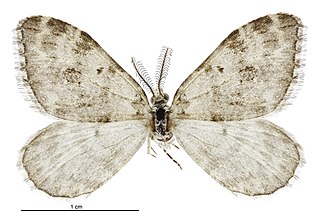
Helastia salmoni is a moth of the family Geometridae. This species is endemic to New Zealand and is found only in Fiordland in the South Island. Adults of this species are on the wing in January and are nocturnal and attracted to light. Although similar in appearance to Helastia corcularia, H. salmoni can be distinuished as its forewings are a lighter white-grey. This species was named in honour of John Salmon.

Helastia corcularia is a moth of the family Geometridae. This species is endemic to New Zealand and is found only in the South Island and the Chatham Islands. It inhabits a wide variety of habitats including native forest and scrubland, gardens, parks, subalpine and coastal areas. Larvae feed on herbs, lichen and moss. The adults of the species are on the wing from September until May and are nocturnal and attracted to light. H. corcularia is considered an orchard and pack house contaminant.
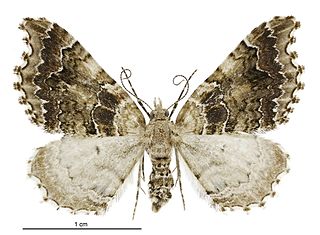
Helastia cymozeucta is a moth of the family Geometridae. It was first described by Edward Meyrick in 1913. This species is endemic to New Zealand and is found in both the North and the upper parts of the South Island. The adults of this species have been observed on the wing from November to January as well as in March.

Helastia farinata is a moth of the family Geometridae. It was first described by William Warren in 1896. This species is endemic to New Zealand and is found in the North Island. H. farinata inhabits shady and damp forest ravines.
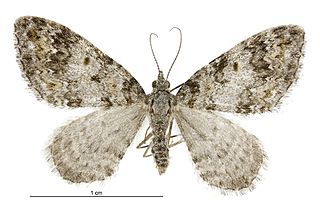
Helastia plumbea is a moth of the family Geometridae. This species is endemic to New Zealand and is found in both the North and South Islands. The species inhabits stream and river banks in montane to subalpine terrain. Adults are on the wing from October to April and are nocturnal and attracted to light. The life history of this species is, at 2024, poorly known but the larval host plants are likely mosses, herbs or possibly lichens.

Helastia semisignata is a moth of the family Geometridae. This species is endemic to New Zealand and is only found in the North Island. The life history of this species is in need of further investigation as sources differ about what plants host the larvae. Adults are on the wing commonly from October until March.

Helastia triphragma, also known as the angle carpet moth, is a moth of the family Geometridae. It was first described by Edward Meyrick in 1883 and originally named Cidaria triphragma. This species is endemic to New Zealand and is only found in the South Island. It inhabits native scrub in coastal, lowland and montane areas. The larval host plant of this species is Helichrysum lanceolatum. Adults are nocturnal and attracted to light.






















